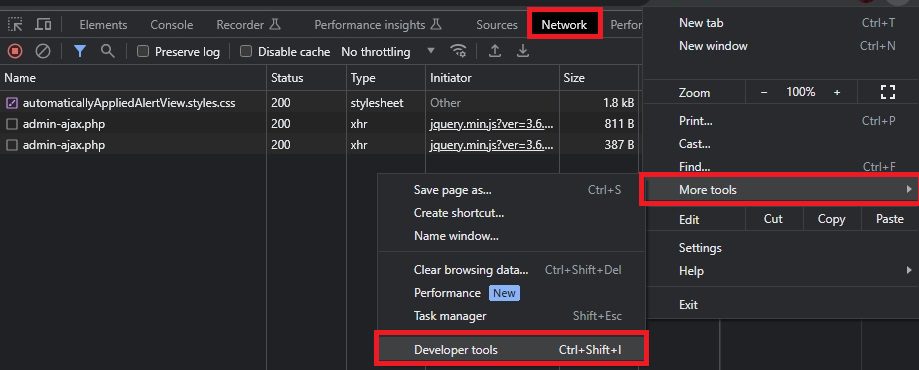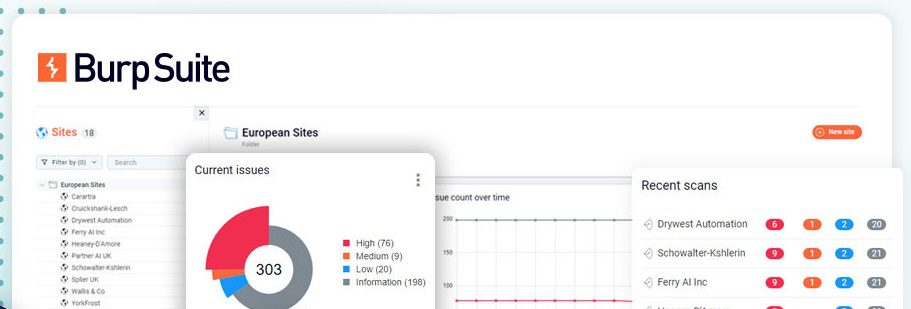In this article, we explore how to find API endpoints of a website, why it’s important, and how to secure them. We discuss several methods to find API endpoints, including manual inspection, web browser extensions, proxy tools, crawling and scanning tools, and reverse engineering mobile apps.
Additionally, we provide tips for finding API endpoints and answering frequently asked questions. Whether you’re a developer or just interested in learning more about APIs, this guide is for you.
API endpoints are essential for any developer who wants to interact with a website’s backend system programmatically. Without endpoints, it would be difficult to extract data or perform actions on a website’s server.
Table of Contents
What are Endpoints in API?
An API endpoint is a specific URL or web address that represents an individual resource or action that a user can access through an API. For example, an e-commerce website might have an endpoint for retrieving product information or placing an order. Each endpoint accepts specific input parameters and returns a predefined output format.
Why is Finding API Endpoints Important?
Knowing the API endpoints of a website can be useful for several reasons. For one, it can help developers build applications or tools that interact with the website’s backend system. This can help automate tasks, extract data, or integrate with other services.
On the other hand, if API endpoints are exposed publicly, they can also be targeted by hackers or malicious actors who can use them to extract sensitive information or perform unauthorized actions.
How to Find API Endpoints of a Website?
There are several methods that you can use to find API endpoints on a website. Let’s explore some of them:
Method 1: Manual Inspection

One of the simplest ways to find API endpoints is to manually inspect the website’s source code. You can do this by opening the browser’s developer tools and looking at the network tab. Here, you can see all the requests that the website is making, including the endpoints that it is using.
Method 2: Using Web Browsers

Some web browsers like Chrome and Firefox have built-in extensions that can help you find API endpoints. For example, the Chrome extension “Postman Interceptor” allows you to capture and inspect HTTP requests and responses, making it easy to find endpoints.
Method 3: Utilizing Proxy Tools

Proxy tools like Burp Suite and Charles Proxy can help you intercept and analyze web traffic, making it easier to find API endpoints. These tools allow you to capture and inspect HTTP requests and responses, and can even modify them to test different scenarios.
Method 4: Crawling and Scanning Tools

Tools like OWASP ZAP and Nikto can help you scan a website for vulnerabilities, including exposed API endpoints. These tools work by crawling the website and analyzing its structure and content to identify potential security issues.
Method 5: Reverse Engineering Mobile Apps
If a website has a mobile app, you can reverse engineer it to find API endpoints. Mobile apps often use APIs to communicate with the website’s backend system, and by analyzing the app’s code and network traffic, you can identify the endpoints that it is using.
How to Secure API Endpoints
Once you’ve identified the API endpoints of a website, it’s important to secure them. Here are some tips to keep in mind:
- Use authentication and authorization mechanisms to control access to the API endpoints.
- Implement rate limiting to prevent excessive requests and reduce the risk of DDoS attacks.
- Use encryption to protect sensitive data that is transmitted over the API.
- Monitor the API traffic for unusual activity and potential security threats.
Tips for Finding API Endpoints
Here are some tips to help you find API endpoints more effectively:
- Start by inspecting the website’s source code and looking for clues in the URL patterns.
- Use tools like Postman Interceptor or Burp Suite to capture and analyze HTTP traffic.
- Experiment with different input parameters to see how the API responds and what data it returns.
- Look for API documentation or developer resources that may provide information about the endpoints.
How to Test API Endpoints?
Testing API endpoints is an important part of the development process to ensure that they are functioning correctly and producing the expected results. There are several ways to test API endpoints, but one of the most popular and user-friendly methods is using a tool called Postman.
Postman is a popular API testing tool that allows you to send requests to API endpoints and view the responses. To test an API endpoint using Postman, you need to follow these steps:
- Open Postman and create a new request by clicking on the “New” button in the top left corner of the screen.
- In the “Enter request URL” field, enter the URL of the API endpoint that you want to test.
- Choose the HTTP method that you want to use to make the request, such as GET or POST.
- If the API endpoint requires any headers or parameters, add them to the request by clicking on the “Headers” or “Params” tab.
- If the API endpoint requires any request data, add it to the request body by clicking on the “Body” tab and selecting the appropriate data format.
- Click the “Send” button to send the request to the API endpoint.
- Once the response is received, you can view it in the “Response” section.
- Postman also allows you to save your requests and responses, as well as create collections of requests that you can run together for more complex testing scenarios.
Other API testing tools, such as SoapUI and Insomnia, offer similar functionality and can be used to test API endpoints. It’s important to test API endpoints thoroughly and regularly to ensure that they are working correctly and producing the expected results.
FAQs: How to Find API Endpoints of a Website
How to document API endpoints?
API endpoints can be documented using tools such as Swagger, which allows you to create a specification for your API and generate documentation from it.
How to build a database with API endpoints?
To build a database with API endpoints, you can use a backend framework such as Node.js or Django, which provides tools for creating APIs and connecting them to databases.
How to name API endpoints?
API endpoints should be named using nouns that represent resources, such as “users” or “orders”, and should follow a consistent naming convention.
How to create API endpoints Node.js?
To create API endpoints in Node.js, you can use a backend framework such as Express or Koa, which provides tools for creating APIs.
How to get all REST API endpoints?
To get all REST API endpoints, you can use tools such as Swagger, which allows you to generate documentation for your API that includes a list of all endpoints.
Can finding API endpoints be used for malicious purposes?
Yes, if API endpoints are exposed publicly, they can be targeted by hackers or malicious actors who can use them to extract sensitive information or perform unauthorized actions. It’s important to secure API endpoints to prevent such attacks.
Conclusion: How to Find API Endpoints of a Website
Finding API endpoints can be a challenging task, but it’s an essential step for any developer who wants to interact with a website’s backend system.
In this guide, we explored several methods that you can use to find API endpoints, including manual inspection, web browser extensions, proxy tools, crawling and scanning tools, and reverse engineering mobile apps. We also discussed the importance of securing API endpoints and provided some tips to help you find endpoints more effectively.
Remember to use these methods responsibly and with permission, and to always prioritize the security of the API endpoints that you access.
NordVPN New Sales 30% OFF!!!
Save 35% On Tools Tailored For Your Amazon Business
Read Redirect Posts
If you’re looking for more redirects post, check out our following posts:
- How To Redirect To Another Page In HTML
- When Would It Be Necessary To 301 Redirect?
- 11 Best WP 301 Redirect Plugins For Improved SEO
- Best 404 Redirect WordPress Plugin: Everything You Need to Know
- How To Make A Redirect Link In WordPress: A Step-by-Step Guide
- How To Install Link Redirect Trace On Firefox And Chrome
- What Does 404 Page Not Found Mean? Understand The Error
- 301 Redirect In PHP: The Key To Maintaining Your Website’s SEO











